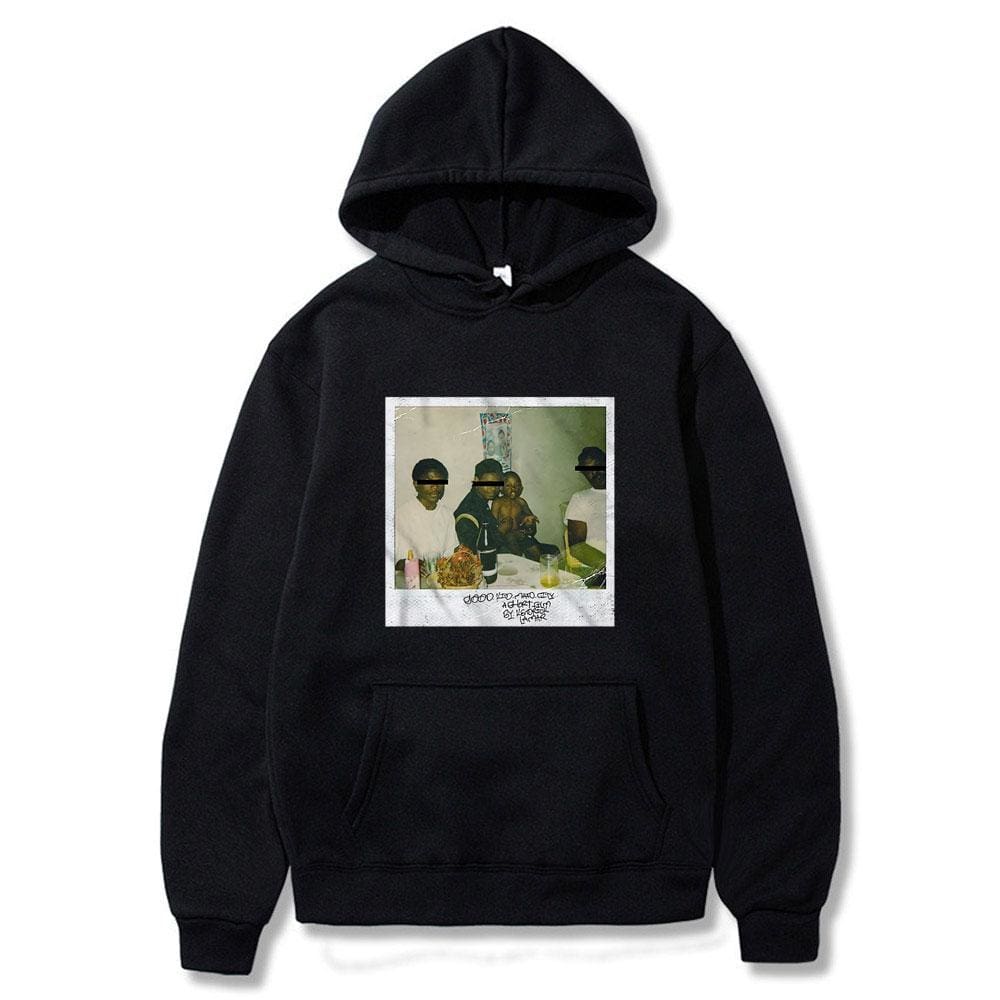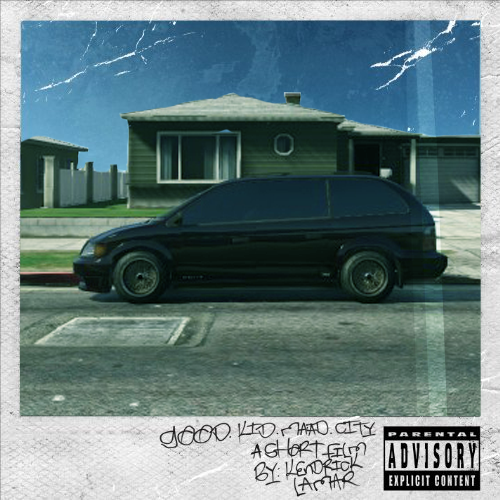


You don't see nobody else's eyes, but you see my eyes are innocent, and tryna figure out what is goin' on." Kendrick explains the photo as follows, "Two are my uncles, to the far right, it's my grandpa, and a baby bottle, next to a 40 oz, next to a gang sign, holdin' a kid," K.Dot says of his cover art. "If you look in the background, you see a picture on the wall, and the picture is me and my pops," Kendrick added. "And the eyes blacked out, that's for my own personal reasons, you'll probably hear about that on the album. That photo says so much about my life, and about how I was raised in Compton, and the things I've seen, just through them innocent eyes. I feel like I needed to make this album to move on with my life. I had them old negative vibes and demons haunting me, and it's that real." Kendrick continued, "It had to come from somewhere, had to come from a place, it coulda been negative and it coulda been positive, but for the majority part of it, it was a negative place." He says recording the album helped him move on, "It was a venting process, to tell these stories I never told."

He explained that the reason why he had not censored his own eyes was that the album's story was told through his eyes, and is based around his experiences. Good Kid, M.A.A.D City by Kendrick Lamar album reviews & Metacritic score: The official major label debut studio album for the Compton rapper features guest appearances from Dr. Cheers to a successful five years.He says of his Aftermath debut, "It's really just like a self-portrait. The cover artwork for Good Kid, M.A.A.D City features a baby Lamar, two of his uncles, and his grandfather, with the adults' eyes censored, possibly for privacy reasons. Drake),” the Compton, California, native has proven that an artist doesn’t have to sacrifice meaningful lyrical content, artistic integrity, or honesty in order to create a record worthy of radio plays and chart success.Īnd while good kid tells the story of a teenage Lamar struggling to find himself as he battles the allure of violence, sex, and drugs in Compton, the album’s intellectually, emotionally, and introspectively mature content continues to teach us to be courageously and unapologetically ourselves against all odds.Īnd as the album's fifth birthday is this Sunday, we've rounded up six of its most memorable quotes that continue to have an impact on us today. From explosive (and sometimes, violent) bangers like "m.A.A.d city" and "Backseat Freestyle." to moody, down-tempo classics like “Sing About Me, I’m Dying Of Thirst” and “Poetic Justice (feat. In an interview with Fuse, Kendrick explained the purpose of. In a time where party-influenced trap rap began to take over the charts in droves, Lamar purposely chose to take the road less traveled and presented the world with a meticulously crafted, introspective short film-and we all watched on in admiration and awe. In the summer of 2013, rapper Kendrick Lamar made an astronomical leap onto the world stage. city is composed of polaroid pictures of Kendricks childhood.

And while the record may not have been his magnum opus (it's a close tie between To Pimp A Butterfly and DAMN.), it certainly positioned him at the epicenter of the music universe. Almost five years ago, Kendrick Lamar blessed our ears and eyes with good kid, m.A.A.d city, a profound, self-critical, and emotionally expansive record that was dubbed a modern classic by critics and fans alike upon its release.


 0 kommentar(er)
0 kommentar(er)
